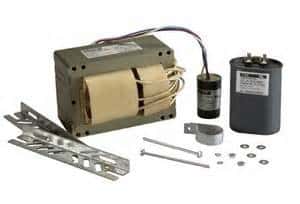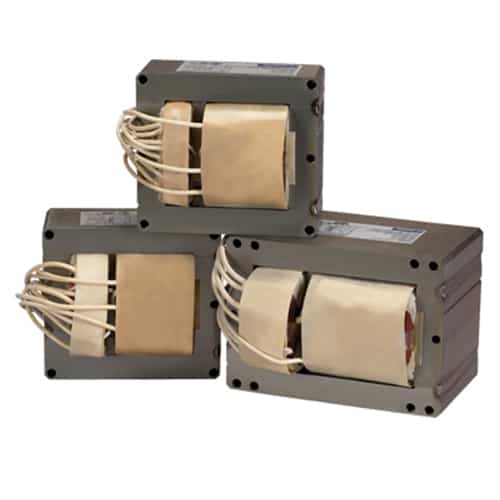250 Watt Pulse Start Metal Halide Ballast Kit
Ballast ANSI: M138/M153
Full ballast replacement kit w/ starter, capacitor, core & mounting hardware
Ballast Type: Pulse Start Metal Halide
Power Factor: 0.90
Weight: 9.4 lbs
JAMES Warranty: 3 Years
Ballast Voltage: Dedicated 480V
Amp Draw: 120V=2.45 208V=1.40 240V=1.23 277V=1.06
Circuit Type: PS-CWA
Capacitor Value: 15.0/400
Starter Used: ST1001
250 Watt Metal Halide Ballast Kit 4T
Ballast ANSI: M138 and M153
Operating Voltage: Dedicated 480V
Included: Starter, Capacitor, Core, Mounting.
FAQ:
What is the difference between pulse start and probe start metal halide ballasts?
Pulse start ballasts use a high voltage pulse to ignite the lamp, while probe start ballasts use a starting electrode to heat up the gas inside the lamp.
Can I use a pulse start ballast with a probe start lamp?
No, pulse start ballasts are designed specifically for use with pulse start lamps.
How do I wire a pulse start metal halide ballast?
Pulse start ballasts are wired in a similar way to other HID ballasts, typically using four or five wires.
What is the lifespan of a pulse start metal halide ballast?
The lifespan of a pulse start ballast can vary depending on factors such as usage and environment, but they typically last for several years.
Can I use a pulse start ballast with a different wattage lamp?
No, pulse start ballasts are designed to work with specific lamp wattages and cannot be interchanged.
What is the difference between quad-tap and multi-tap pulse start ballasts?
Quad-tap ballasts are designed to work with four different input voltages, while multi-tap ballasts can handle more than four input voltages.
Can a pulse start ballast be used in damp or wet locations?
Many pulse start ballasts are rated for use in damp or wet locations, but it is important to check the manufacturer specifications before installation.
How do I select the right pulse start ballast for my application?
Consider the lamp wattage and voltage, as well as the input voltage available at the installation site. Consult the manufacturer’s specifications and wiring diagrams for guidance.
What is the difference between high power factor and standard power factor pulse start ballasts?
High power factor ballasts are designed to operate more efficiently, with less energy waste, while standard power factor ballasts are less efficient but may be more cost-effective for some applications.


